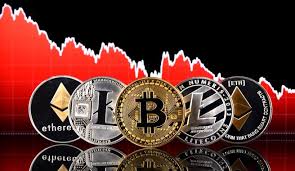
Essential Guide to Crafting the Perfect Crypto Trading Setup
In the rapidly evolving world of cryptocurrency trading, having a robust and well-thought-out Crypto Trading Setup click here is essential for success. With the correct setup, traders can enhance their chances of maximizing profits while minimizing risks. In this article, we will explore the various components that make up an effective crypto trading setup, including hardware, software, strategy, and the importance of continuous learning in this dynamic market.
Understanding the Essentials of a Crypto Trading Setup
Before diving into specific recommendations, it’s crucial to understand what constitutes an efficient crypto trading setup. A typical setup should facilitate quick access to market data, seamless execution of trades, and comprehensive analysis tools. This often involves combining the right hardware, software, and trading strategies. Let’s break down each component.
1. Hardware Requirements
At the core of a successful trading operation lies efficient hardware. Here are key components to consider when designing your crypto trading setup:
- Computer/Laptop: A powerful computer is vital for running multiple applications, browsers, and trading platforms simultaneously. Look for a device with a strong CPU, ample RAM (16 GB or more), and a solid-state drive (SSD) for fastest accessibility.
- Multiple Monitors: Using more than one monitor can significantly enhance productivity by allowing traders to view various data points at once. This setup enables real-time tracking of multiple cryptocurrencies, charts, and news feeds.
- Ergonomic Accessories: Investing in a quality keyboard, mouse, and ergonomic chair may improve comfort during long trading sessions, ultimately helping maintain focus and efficiency.

2. Software Tools
Once the hardware is set up, the next step involves selecting the right software tools for trading. Here are several essential applications:
- Trading Platform: Choose a reputable trading platform that provides necessary features such as charting tools, real-time quotes, and various order types. Popular platforms like Binance, Coinbase Pro, and Kraken are good options for getting started.
- Charting Software: Advanced charting tools can help identify trends and patterns in price movements. Software such as TradingView or Coinigy offers extensive features for technical analysis.
- Portfolio Management Tools: Tracking your investments is vital in crypto trading. Utilize applications like CoinMarketCap Portfolio or Delta to track your holdings, performance, and market trends.
- News Aggregators: Staying updated with the latest news can give traders a competitive edge. Tools such as CoinDesk or CryptoSlate aggregate relevant news regarding market trends and regulatory updates.
3. Developing a Trading Strategy
A solid trading strategy is the backbone of any crypto trading setup. This strategy should encompass your objectives, risk tolerance, and preferred trading style. Here are some strategies to consider:
- Day Trading: This involves making multiple trades within a single day in an attempt to profit from short-term price movements. It requires a solid understanding of market trends and quick decision-making.
- Swing Trading: This approach focuses on holding assets for a few days to weeks, capitalizing on expected upward or downward market shifts. It’s less stressful than day trading but still requires significant monitoring.
- HODLing: For those less interested in daily market fluctuations, “HODLing” or holding onto assets long-term can be a viable strategy, betting on the overall upward trend of cryptocurrencies.
4. Risk Management

Effective risk management is crucial in protecting your portfolio from significant losses. Here are some strategies to implement:
- Set Stop-Loss Orders: This order automatically sells your assets when prices hit a specific low, preventing further losses.
- Diversify Your Portfolio: Rather than putting all funds into a single asset, spread investments across different coins to manage risk effectively.
- Only Invest What You Can Afford to Lose: The volatile nature of cryptocurrencies means it’s wise to only invest disposable income.
The Importance of Continuous Learning
The cryptocurrency market is continually changing, making it vital for traders to engage in ongoing education. Here are some recommended methods for staying informed:
- Online Courses: Numerous platforms offer courses on crypto trading strategies and market analysis, such as Udemy or Coursera.
- Webinars and Live Streams: Participate in live trading sessions or webinars hosted by experienced traders, which can provide valuable insights.
- Join Trading Communities: Engage with online communities and forums like Reddit’s r/CryptoCurrency or local trading groups to share insights and strategies.
Final Thoughts
Crafting the perfect Crypto Trading Setup is a dynamic and ongoing process. Each trader’s needs may vary based on their unique strategies and preferences, but focusing on robust hardware, appropriate software tools, and a well-defined trading strategy can significantly enhance trading success. Moreover, a commitment to continuous learning is vital for staying relevant and making informed decisions in the ever-evolving crypto landscape.
So whether you are starting your journey in crypto trading or looking to refine your existing setup, take the time to assess your current tools and strategies. Happy trading!